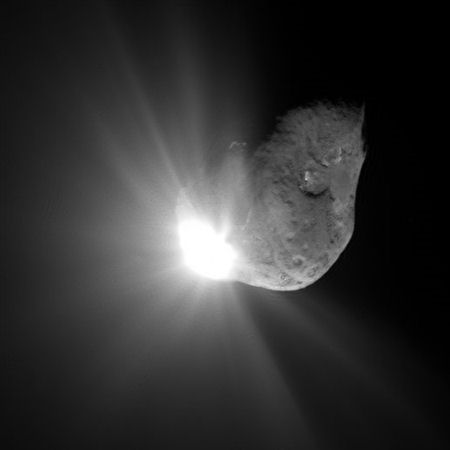You have surely heard about the NASA’s Deep Impact. I find this mission really great, what a technological success!!
- Comet impact: July 4, 2005 (surely, by accident ;-)
- Impact velocity: 37’000 km/h
- Spacecraft Size: nearly as large as a Volkswagen Beetle automobile.
- Impactor spacecraft: about the same dimensions as a typical living room coffee table

Deep Impact consists of a sub-compact-car-sized flyby spacecraft and an impactor, about the size of a washing machine. The dual spacecraft carry three imaging instruments, two on the flyby and one on the impactor.
The impactor has an auto-navigation system that will make final corrections to its flight path just minutes before the scheduled collision. Scientists hope the resulting crater will expose fresh material from below the comet’s surface and subsurface.
“That is the whole point of Deep Impact,” said mission principal investigator and University of Maryland astronomer Michael A’Hearn. “We want to find out what are the guts of a comet.”The flyby spacecraft will use medium and high resolution imagers and an infrared spectrometer to collect and send to Earth pictures and spectra of the event. Space-born science platforms will also be watching Deep Impact. These include NASA’s Hubble and Spitzer space telescopes, the Chandra X-ray Observatory, the Swift and Submillimeter Wave Astronomy satellites, the European Space Agency’s XMM-Newton X-ray observatory and Rosetta spacecraft. Observatories on Earth will view the impact and its aftermath.
Update: NASA logged about 1 billion connections in one day on July 4. Wow.
